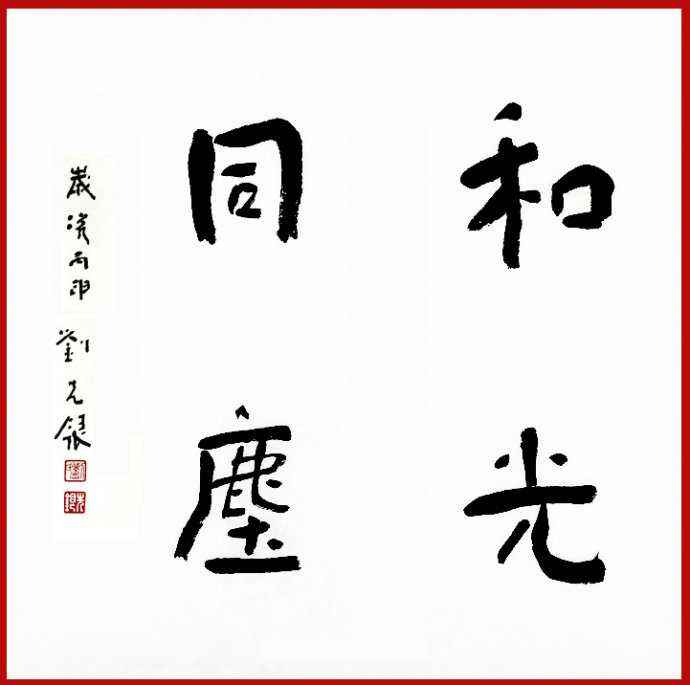富得流油|刘先银逻辑解析《道德经》:“孰能浊以静之徐清,孰能安以动之徐生”(36)
[38] Martin Heidegger, “Grunds?tze des Denkens: Freiburger Vortr?ge 1957”, in Bremer und Freiburger Vortr?ge GA vol. 79, 1994, 79-176, 87.
[39] Ibid., 88.
[40] Ibid., 93.
[41] Ibid., 93. 在“思想的基本原则”最初在 Jahrbuch für Psychologie und Psychotherapie vol. 6 (1959) 发表之际 , 此处引文给出了一个错误的出处:“Laotse sagt (Kap. XVII; übersetzt von V. v. Strauss)” , 这篇文章的英译文延续了这个错误:“Lao Tzu says (Ch. 17)” , 见Martin Heidegger, The Piety of Thinking, trans. James G. Hart and John C. Maraldo (Bloomington: Indiana University Press, 1976, 46-58) 。 尽管这个错误在《海德格尔全集》第79卷(1994年出版)中得到纠正 , 但已有一些二手文献随之给出错误的出处 , 例如 , Rolf Elberfeld, “Laozi-Rezeption in der deutschen Philosophie”, in Philosophieren im Dialog mit China, ed. H. Schneider (K?ln: Chora, 2000, 141-165), 154; Michael E. Zimmerman, Eclipse of the Self: The Development of Heidegger's Concept of Authenticity (Athens - London: Ohio University Press, 1981), 256.
[42] Otto P?ggeler, The Paths of Heidegger's Life and Thought, translated by J. Bailiff. Amherst (New York): Humanity Books, 281.
[43] Ibid., 281.
[44] 转引自张祥龙 , 《海德格》 , 台北:康德出版社 , 2005年 , 235 , 232 。
[45] 由于篇幅有限 , 此处不作详细讨论 , 请参阅 Lin Ma, Heidegger on East-West Dialogue: Anticipating the Event (London/New York: Routledge, 2008), 47-75 。
[46] 此处笔者所借鉴的是刘殿爵关于老子对于对立面中二因素之关系的思想 。
[47] Martin Heidegger, “Die Einzigkeit des Dichters”, in GA 16: Zu H?lderlin -Griechenlandreisen (Frankfurt am Main: Vittorio Klostermann, 2000, 35-44), 36-37.
[48] Ibid., 37.
[49] 此处的vor一词是双关语 , 它的另一层含义是未来性 , 我们在那种“朴拙的单纯性”之前 , 这是因为它总是在来临之中 。
[50] Ibid., 42; 着重出自原文 。
[51] Ibid., 43; 着重为笔者所加 。
[52] Ular, 17; 着重为笔者所加 。
[53] 冯·斯特劳斯把“用”译为 Gebrauch , 把“無”译为 Nichtseyn , 卫理贤把“用”译为 Werk , 把“無”译为 Nichts 及 Nichtsein 。
[54] 何石彬 , “老子之道与有无关系新探” , 《哲学研究》(2005: 7, 39-44), 41.
[55] A. C. Graham, Studies in Chinese Philosophy (Albany NY: State University of New York Press, 1990), 346.
[56] Victor Mair, Tao Te Ching. The Classic Book of Integrity and the Way, Westminster Maryland: Bantam, 1990.
[57] A. C. Graham, Studies in Chinese Philosophy, 412, 343-351 Cf. also Ames and Hall (2003, 91).
[58] 例如 Guenter Wohlfart, “Heidegger and Laozi: Wu (Nothing)--on chapter 11 of the Daodejing”, Journal of Chinese Philosophy 30, 2003, 39-59;王庆节 , 《解释学、海德格尔与儒道今释》(北京:中国人民大学出版社 , 2004) , 184(注释2) 。
[59] Heidegger, “Die Einzigkeit des Dichters”,43 。
[60] 王庆节 , 《解释学、海德格尔与儒道今释》 , 184-85 。
[61] 学者们所注重的还有海德格尔在“语言的性质”和“同一律”中对道家思想的中心词语“道”的指涉以及海德格尔与台湾学者萧师毅翻译《道德经》之事 , 笔者已在另文中讨论过这些侧面 , 兹不赘叙 。 有兴趣的读者请参阅 Lin Ma, Heidegger on East-West Dialogue: Anticipating the Event (London/New York: Routledge, 2008), 122-28, 153-57.

文章图片
刘先银书法作品:和光同尘
中国唯一一个以道士命名的城市 , 1500年来从未改名 , 如今富得流油
不管是哪个地区 , 都有自己的名字 , 也许会有一些历史背景 , 也许是根据当地的人物来命名 , 而中国这个地方是唯一以道士命名的城市 , 1500年来从来没有改过名 。 这个城市就是茂名市 , 有一定的历史背景 , 乍一看起来似乎荒诞不已 , 但是却蕴含着一段故事 。
- 少点|刘先银作品《注目礼的意蕴》致敬经典:通往幸福的喜悦-彼黍离离此何人哉
- 生活|刘先银经典点说《道德经·注目礼的意蕴》32自22吾19我:百姓皆谓我自然
- 生活|刘先银经典点说《注目礼的意蕴》:一日不见,如三月兮
- |古代曾被骂“下九流”的2种职业,如今备受追捧,从业者富得流油
- 元亨利贞@刘先银经典点说《道德经》第五十二章 天下有始
- 观点评论|刘先银经典点说剧本与小说《注目礼》时间哲学:管住情绪,是一种高贵的品质
- 富得流油@老年间,骗术最高的境界莫如“师姑钓”,一旦上钩,必定财色兼丢
- 意蕴|刘先银经典点说:《注目礼的意蕴》目之以为鼎:燃木煮食,化生为熟,除旧布新
- 刘先银|刘先银序言:贾育平摄影《不易忘却的光影》纪录东方《艺和色》对话韦艺和
- 传统|刘先银经典点说景喜猷书法书贵瘦硬方通神,黄庭坚赋予了草书新的境界
